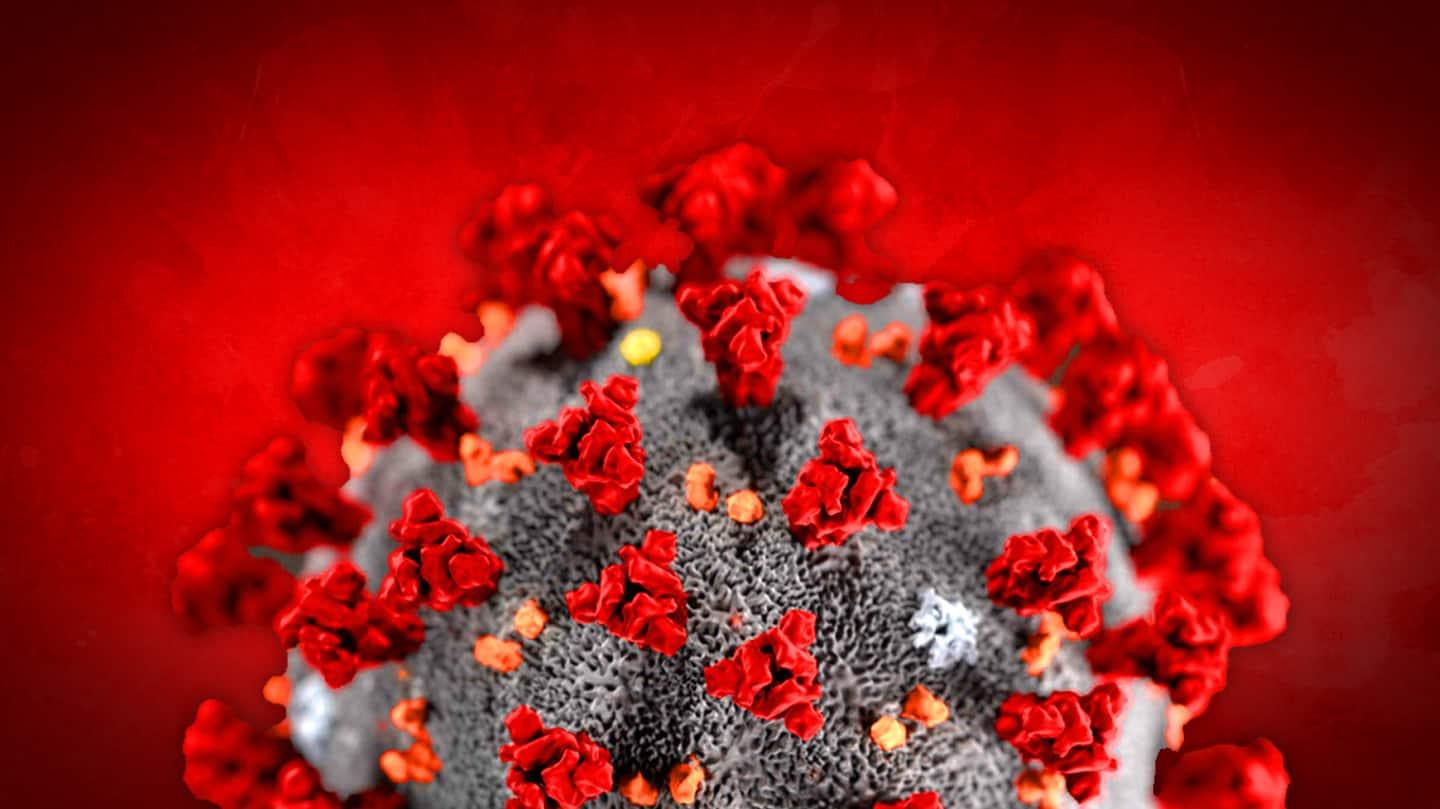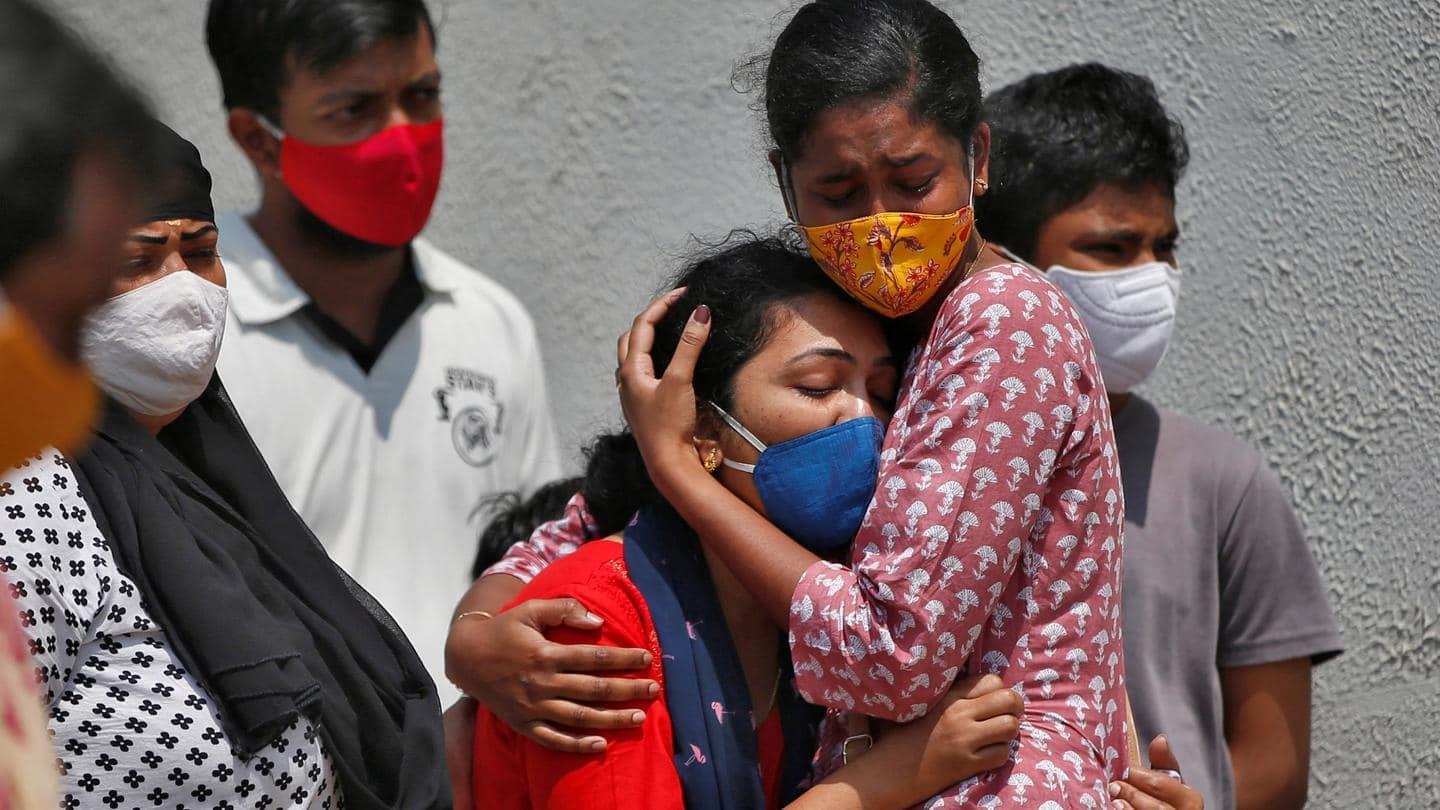(MENAFN- NewsBytes)
India is now reporting more coronavirus infections than any other nation, yet it continues to see a daily record rise in cases. Experts worry India's second wave of COVID-19, said to be much more dangerous than the first wave last September, is to be blamed on a new and possibly more virulent "double mutant" coronavirus variant called B.1.617.
Here's all you need to know.
In this article What is B.1.617? 'Having 2 of these mutations is concering' Variant detected in 10 countries Higher transmissibility of variant not yet established: India Prevalence of variant over 60% in Maharashtra 'Sooner or later, B.1.617 will become prevalent in India' Does the mutation make B.1.617 deadlier? #mutations-a- big-cause-for-worry,
'Mutations a big cause for worry' Will the variant render vaccines less effective?
Variant What is B.1.617?

The B.1.617 variant was detected in India with two mutations—E484Q and L452R. It was first reported late last year and more details were presented to the World Health Organization (WHO) on Monday.
India's Health Ministry first acknowledged the variant in March-end and has downplayed it since.
It's a 'variant of interest', but it has not been labeled a 'variant of concern' yet.
Expert 'Having 2 of these mutations is concering' Maria Van Kerkhove, the WHO's technical lead officer on COVID-19, told reporters on Friday, "This is a variant of interest we are following." "Having two of these mutations, which have been seen in other variants around the world, are concerning," she said, adding that there was a similarity with mutations that increase transmission and reduce neutralization, possibly reducing a vaccine's efficacy.
Other nations Variant detected in 10 countries

The strain has been detected in at least 10 other countries including Australia, Belgium, Germany, Ireland, Namibia, New Zealand, Singapore, the United Kingdom, and the United States. According to a situation report on outbreak.info—which uses data from global repository GISAID (Global initiative on sharing all influenza data)—408 sequences in the B.1.617 lineage were detected till Friday, out of which, 265 were found in India.
Virus Higher transmissibility of variant not yet established: India "Higher transmissibility of this variant is not established as yet," India's Health Ministry said Friday. Genome sequencing can indicate whether the variant is a possible culprit for India's second wave, however, India has not confirmed it yet.
The average prevalence of the variant climbed to 52% of samples sequenced in April from near zero in January, according to outbreak.info.
Genome sequencing Prevalence of variant over 60% in Maharashtra

India has conducted genome sequencing for less than 1% positive samples as of last month. In Maharashtra—India's worst-hit— the prevalence of this variant was more than 60%, said Anurag Agrawal, the director of the Council of Scientific and Industrial Research's genomics institute that is conducting genome sequencing.
Agrawal said the mutations make the variant "more likely to transmit and escape prior immunity."
Information 'Sooner or later, B.1.617 will become prevalent in India' Rakesh Mishra—the Hyderabad-based director of the Centre for Cellular and Molecular Biology, another lab conducting genome sequencing—said, "Sooner or later, (the variant) will become prevalent in the whole country, given the way it is spreading." Mortality Does the mutation make B.1.617 deadlier?

Researchers are still trying to ascertain if the mutations make the variant more deadly. The L452R mutation increases viral transmission by around 20% and reduces antibody efficacy by more than 50%, Agrawal said citing US studies.
Jesse Bloom—an associate professor for genome sciences and microbiology at Washington University—said both mutations are known to decrease the binding of antibodies created by infection and vaccination.
Expert 'Mutations a big cause for worry' "Mutations at sites E484 and L452 have been observed separately, but this is the first major viral lineage that combines the two," said Bloom. "We do believe that a lot of the increase in the reproduction number can be explained by these mutations," Bernstein India's healthcare research head Nithya Balasubramanian said, "The mutations are a big cause for worry."
Vaccines Will the variant render vaccines less effective?

According to the Indian Council of Medical Research (ICMR) scientist Aparna Mukherjee, India is testing whether the new variants are capable of "immune escape," i.e., whether they can evade a human body's immune response.
If the variants are capable of immune escape, it would render the vaccines less effective, thereby jeopardizing all efforts to combat the pandemic.
(Source: https://www.bloomberg.com/news/articles/2021-04-16/india-has-a- double-mutant-virus-variant-should-we-be-worried,
Bloomberg )
MENAFN18042021000165011035ID1101935465
Legal Disclaimer:
MENAFN provides the information “as is” without warranty of any kind. We do not accept any responsibility or liability for the accuracy, content, images, videos, licenses, completeness, legality, or reliability of the information contained in this article. If you have any complaints or copyright issues related to this article, kindly contact the provider above.